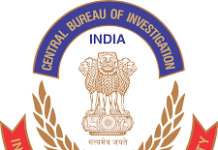
Officials familiar with the developments said on Friday that top Indian and Chinese commanders will hold the 12th round of military talks in the Ladakh sector on Saturday to defuse tensions between the two countries, who have been locked in a border dispute for nearly 14 months.
On the condition of anonymity, one of the officials cited above said that talks between corps commander-ranked officers of the Indian Army and the Chinese People’s Liberation Army (PLA) will begin at 10.30 a.m. at Moldo on the Chinese side of the Line of Actual Control (LAC).
The Indian Army told the PLA that disengagement at all friction points along the disputed border was critical for de-escalation of the conflict during the previous round of military talks between the two sides on April 9.
“We are expecting forward movement in hammering out a disengagement agreement at Hot Springs and Gogra,” a second official said, asking not to be named.
Since June 6 of last year, the Indian Army and the PLA have held 11 rounds of talks between corps commander-ranked officers to resolve the border dispute in eastern Ladakh, but the two sides have only had limited success in hammering out an agreement for the disengagement of rival soldiers stationed at friction points along the disputed LAC.
After the ninth round of talks in mid-February, the military dialogue’s only significant outcome was the disengagement of front-line troops and weaponry in the Pangong Tso sector. The next round of talks will concentrate on resolving issues in Hot Springs, Gogra, and Depsang. Both armies have 50,000 to 60,000 troops in the Ladakh theatre, and their deployments haven’t shrunk since the Pangong Tso sector disengagement.
On May 28, army chief General Manoj Mukund Naravane said his troops were on high alert as the PLA maintained its “immediate depth” across the LAC, from which they could be deployed to forward areas at short notice. In the Ladakh sector, immediate depth refers to a distance of 150 to 200 kilometres from the LAC.
Naravane also stated that results should not be expected after each round of negotiations, citing the case of Pangong Tso, where disengagement occurred after nine rounds.
The disengagement process has been hampered by the PLA’s reluctance to pull back its forward deployed troops and restore the status quo ante of April 2020, as previously reported by Hindustan Times.
In Hot Springs and Gogra, where rival troops are forward deployed and where skeletal disengagement took place last year, the Indian Army’s patrolling activity has been hampered, but the gains have not been consolidated. The PLA’s presence in Depsang has also hampered Indian soldiers’ access to key routes, such as those leading to Patrolling Points 10, 11, 11-A, 12, and 13. Depsang’s problems predate the current border standoff, to be sure.
While the two armies held their first round of military talks on June 6 of last year, the Galwan Valley skirmish on June 15, 2020, caused major complications and dashed hopes of a major breakthrough. The bloody clash, which claimed the lives of 20 Indian soldiers and an unknown number of Chinese troops, shattered trust between the two countries.






